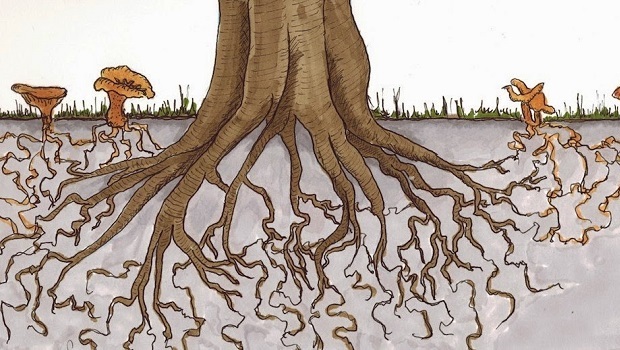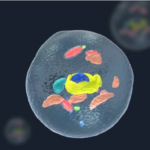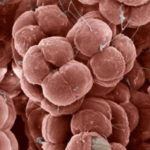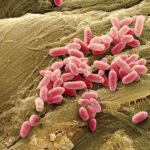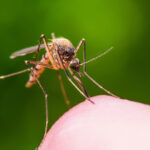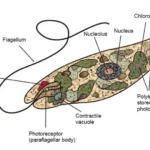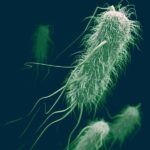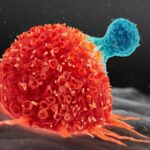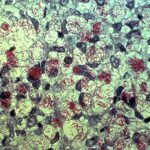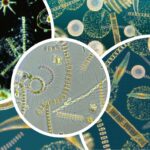What Is Symbiosis?
Symbiosis, generally understood as a type of relationship between organisms, arises from all participating organisms benefiting from the relationship (it can be used interchangeably with mutualism, but in some sources, it refers to all types of relationships). At Evolution Tree, we prefer to use the term symbiosis interchangeably with mutualism because, through a phenomenon called endosymbiosis, eukaryotic cells have emerged, and arguably, a more beneficial symbiosis cannot be imagined. For comparison, parasitism is a relationship type where the parasite benefits while the host suffers. Commensalism refers to relationships where one species benefits while the other is unaffected. Amensalism, on the other hand, describes relationships where one species is completely suppressed or even killed, while the other is unaffected or benefits. Now, let’s delve into some details and examples:
In symbiosis, it’s generally assumed that the organisms involved remain in a relationship for long periods, even for their entire lifetimes. One of the most typical examples is the relationship between plant roots and mycorrhizal fungi, which is lifelong. In this relationship, the fungus increases the surface area of plant roots, enhancing the uptake of minerals by the plant, and provides products of its respiration, such as carbon dioxide, which the plant utilizes in photosynthesis. In return, the fungus can access carbohydrates (especially glucose and sucrose) that it needs much more rapidly and effectively. However, this mutual relationship is considered more “mutualistic” in environments where minerals are scarce. This is because in mineral-rich soils, the fungus, which attaches to the plant roots to form a symbiotic relationship, can slow down the plant’s growth compared to normal. It may not necessarily harm the plant, but it exhibits a semi-pathogenic effect. Therefore, defining symbiotic relationships can sometimes be challenging.
Lichens, the second most cliché example of symbiotic life, are not very clear examples of symbiotic life. As you know, lichen consists of algae and fungi in a binary relationship, and the algae species participating in this relationship are so adapted to lichen life that they are rarely seen outside of this relationship, i.e., they do not live independently. However, the interesting point is that it is difficult to determine exactly how algae benefit from the lichen relationship today. Because observing a direct substance transfer from fungi to algae is very difficult, and there are no clear findings about this. In this case, it is difficult to define whether lichen is a symbiotic relationship or whether fungi choose algae as a target in parasitic or commensal relationships. Therefore, actually, “symbiotic life” should be defined based on lifestyle rather than on benefit and harm. In other words, instead of the benefit/harm relationship between two organisms, it should be considered whether those organisms live interdependently and in what forms they live. When the benefit/harm relationship is not considered and, ultimately, when it is thought that fungi and plant roots or fungi and algae are species that coexist, it becomes easier to say that they are symbiotic organisms.
There are so many different types of symbiotic relationships in nature that listing them here could create a list you would read for hours. However, based on the host realm, a general classification can be made into 4 types of host types. Below, those written in bold are the names of organisms that attach to the host and establish a symbiotic relationship with it, roughly indicating the benefits they provide to the host and the benefits they acquire themselves:
Host: Plant
- Mycorrhizal fungi (enhance mineral uptake, provide photosynthetic input)
- Nitrogen-fixing bacteria (supply fixed nitrogen, receive photosynthetic carbon)
- Endophytic fungi (protect plant from herbivores, receive photosynthetic carbon)
- Ants (protect plant from herbivores, gain access to nest and food through the plant)
Host: Animal
- Photosynthetic algae (provide photosynthetic carbon and increase nitrogen sources)
- Chemosynthetic bacteria (supply fixed carbon)
- Bacteria and yeasts associated with insects (provide essential amino acids, vitamins, and sterols)
- Cellulose-degrading microorganisms (digest cellulose in the gut and pass the products to the animal)
- Luminescent bacteria (provide camouflage and warning signals)
- Ants (obtain some nutrients from their hosts and protect their hosts from other animals)
Host: Fungus
- Lichens (fungus receives photosynthetic carbon)
Host: Protista
- Methanogenic bacteria (enhance anaerobic respiration, perform methanogenesis)
- Nitrogen-fixing bacteria (Diatoms, obtain fixed nitrogen from cyanobacteria)
- Motile microorganisms (Protista, accelerate their movement through the surface attached spirochetes)
Exploring How and Why Symbiotic Life Evolved
It’s crucial to shed light on this point. In an experiment conducted by Professors Kwang W. Jeon and Jae Park from the Department of Biochemistry at the University of Tennessee, a symbiotic relationship was established between a protist called Amoeba proteus and Escherichia coli bacteria. Initially, the bacteria harmed the host, resulting in slower growth compared to independent amoebas. However, after an 18-month experiment spanning 200 generations, the detrimental effects of the bacteria on the amoeba diminished, and the amoeba began to sustain itself without being affected by the presence of bacteria.
The findings from this research suggest that symbiotic relationships evolved from the coexistence of contrasting species. Initially unrelated and even harmful to each other, these species first caused harm but eventually began to coexist, becoming “accustomed” to each other or adapting to live together. So, how often and when did this evolution occur? This topic is still not fully understood. However, to provide some insight into your phylogenetic tree question, a scientifically supported fact is that grasses and endophytic fungi, along with the pathogenic species Epichloë, are evolutionarily closely related. Despite being different species, they are sexually compatible (which deviates from the definition of species based on biological taxonomy). Another example is the close phylogenetic relationship between Rhizobium, which forms symbiotic relationships with legumes, and Agrobacterium, another pathogenic bacterium.
Evolutionarily, it is believed that these relationships evolved because they provide advantages to organisms in their natural environment. Through symbiotic relationships, parties stop performing certain tasks because the other party fulfills certain conditions, which saves them energy. For example, some plants attract ants to protect themselves from herbivores. As a result, they no longer need to produce protective secretions like other plants do. Acacia trees in South America produce chemical substances called allelochemicals to deter herbivores. However, in regions abundant with a particular species of ant, these trees are protected from herbivores by the ants, and they no longer produce these chemicals. Examples abound in this manner. Symbiotic life is indeed a significant step in evolutionary processes and has enabled the evolution of eukaryotes from prokaryotes (endosymbiosis). Unfortunately, there isn’t a phylogenetic tree available as you requested; however, if we come across one, rest assured we will share it with you.
